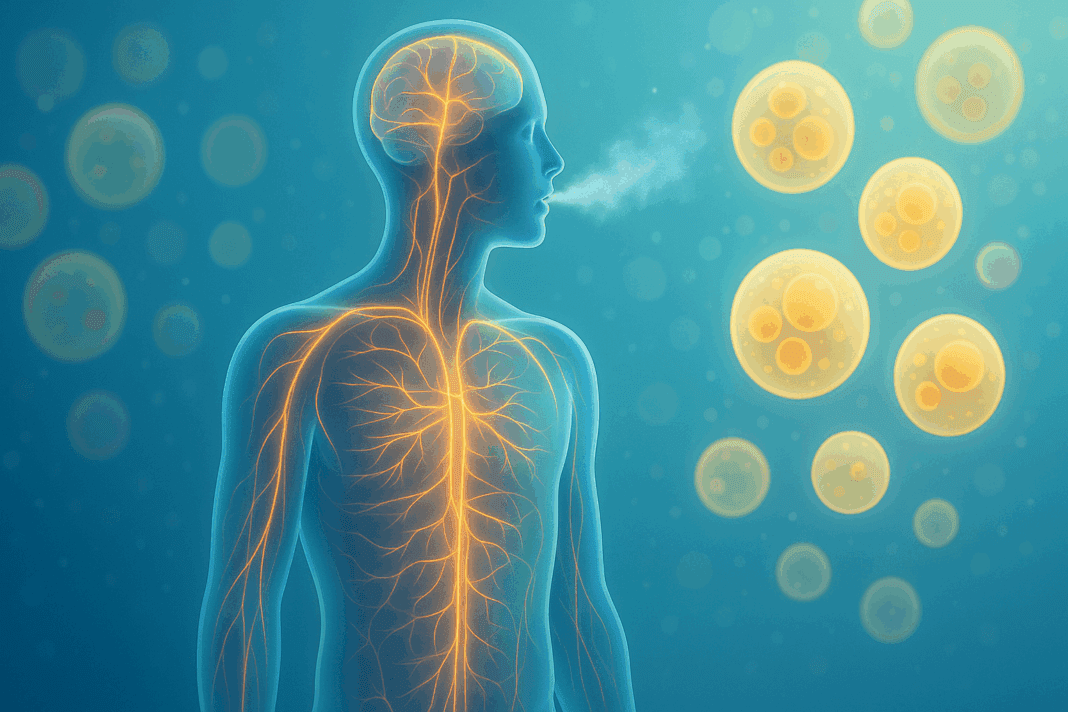Understanding the science of weight loss requires far more than a simple grasp of calorie counting or exercise routines. While countless diets and fitness programs promise rapid results, few address the intricate biological processes behind fat loss in a medically accurate and scientifically grounded manner. One of the most persistent questions people ask is, “How does your body get rid of fat?” or, put another way, “Where does fat go when you lose weight?” These are not just rhetorical curiosities—they are questions rooted in real biochemistry, physiology, and metabolic science. To truly comprehend how fat is burned, where it goes, and whether it disappears instantly or gradually, we must delve into cellular respiration, hormonal regulation, organ system interactions, and more. This article aims to demystify the science of weight loss, offering a comprehensive, evidence-based look at what actually happens inside your body when fat loss occurs.
You may also like: Expert-Backed Weight Loss Tips for a Healthier Lifestyle: What You Need to Know for Long-Term Weight Control and Wellness
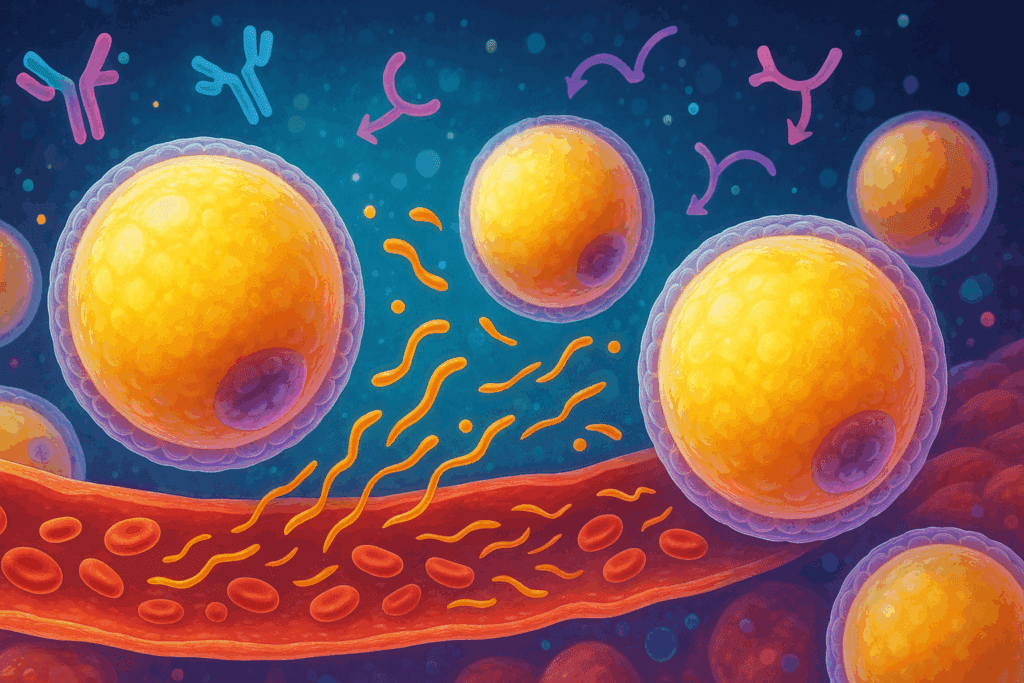
How Does Weight Loss Work on a Biological Level?
To understand how weight loss works, one must first grasp the concept of energy balance. Your body requires energy to perform even the most basic tasks—from breathing to digesting food to pumping blood through your arteries. This energy comes from calories, which are units of energy stored in the food we consume. When the body receives more energy (calories) than it uses, the excess is stored—mostly in the form of triglycerides within fat cells (adipocytes). Conversely, when there is a consistent energy deficit, the body turns to its fat reserves to make up the difference.
But weight loss is not merely about cutting calories; it’s about triggering a series of metabolic events that allow the body to access and mobilize stored fat. Hormones like insulin, glucagon, leptin, ghrelin, and cortisol all play a role in regulating fat storage and breakdown. Insulin, for example, facilitates fat storage by promoting the uptake of glucose and fat into cells. On the other hand, low insulin levels during fasting or calorie restriction enable the activation of hormone-sensitive lipase (HSL), which breaks down triglycerides into glycerol and free fatty acids—key components for energy production.
This biochemical cascade explains how weight loss works when managed through sustainable lifestyle changes. Rather than viewing fat loss as a binary result of diet or exercise, it’s more accurate to see it as a multi-system, hormonally influenced process grounded in cellular biochemistry. This perspective allows for a more nuanced understanding of fat metabolism and provides a framework for individuals seeking long-term health improvement.

Where Does Fat Go When You Lose Weight? The Respiratory Route of Fat Loss
Among the most commonly asked questions in nutrition science is, “Where does fat go when you lose weight?” At first glance, it may seem like fat simply “melts” or is “burned off,” but the real answer is both more complex and more fascinating. According to a widely cited study published in the British Medical Journal, the vast majority of fat mass lost is exhaled as carbon dioxide. In short, when you lose weight, you literally breathe fat out of your body.
Let’s break this down. When triglycerides stored in fat cells are broken down, they release glycerol and free fatty acids. These molecules undergo a metabolic pathway known as beta-oxidation, which occurs in the mitochondria of cells. The end product of this process is acetyl-CoA, which enters the Krebs cycle (or citric acid cycle). This cycle produces high-energy molecules like NADH and FADH2, which are then used in the electron transport chain to generate ATP, the body’s energy currency. The by-products of this entire process are water and carbon dioxide. The carbon dioxide is then carried to the lungs and exhaled, while the water may be excreted through sweat, urine, or respiration.
So when asking “when you lose weight where does it go,” the most accurate answer is: it turns into carbon dioxide and water. Approximately 84% of fat is exhaled as CO₂, and the remaining 16% leaves the body via bodily fluids. This elegant and surprising conclusion underscores the importance of respiration in the fat-loss process and explains why increased physical activity—which boosts respiration and energy demand—is a critical factor in effective weight loss.
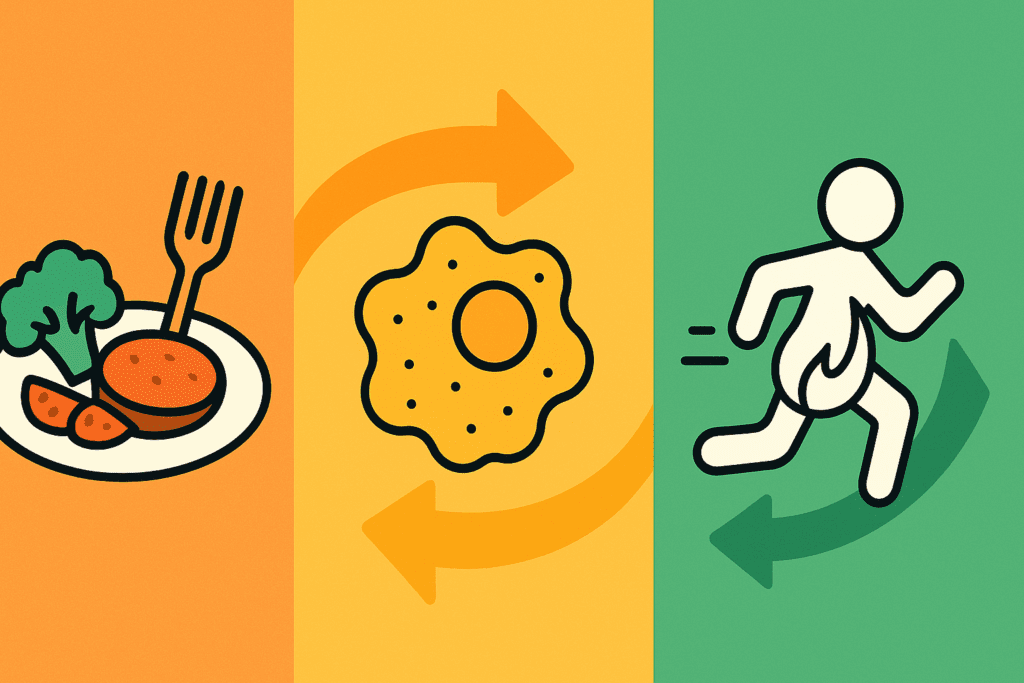
Does Fat Burn Instantly or Later? Timing and the Metabolic Process
Another frequent inquiry involves the timeline of fat oxidation: “Does fat burn instantly or later?” The answer lies in understanding the delayed and regulated nature of energy mobilization. Unlike carbohydrates, which the body uses almost immediately for energy, fat is metabolized more slowly. This slower breakdown is a function of both hormonal regulation and enzymatic action.
After a meal, insulin levels are elevated, favoring the storage of nutrients rather than their breakdown. It’s not until several hours into fasting—or during extended aerobic exercise—that insulin levels drop and counter-regulatory hormones like glucagon and adrenaline stimulate the breakdown of fat. Thus, fat metabolism typically begins several hours after energy intake has ceased or when energy demands outpace carbohydrate stores.
This delay in fat mobilization reveals why prolonged, steady-state aerobic activity is especially effective for fat oxidation. It also explains why people don’t “burn fat” the moment they begin a workout or skip a meal. The body’s energy systems operate on a tiered priority basis, with carbohydrates serving as the preferred quick-access fuel and fat being recruited during extended or sustained energy deficits. So in terms of whether fat burns instantly or later, it is biologically more accurate to say that fat burning is a delayed response to energy scarcity and is governed by complex metabolic signals rather than immediate actions.
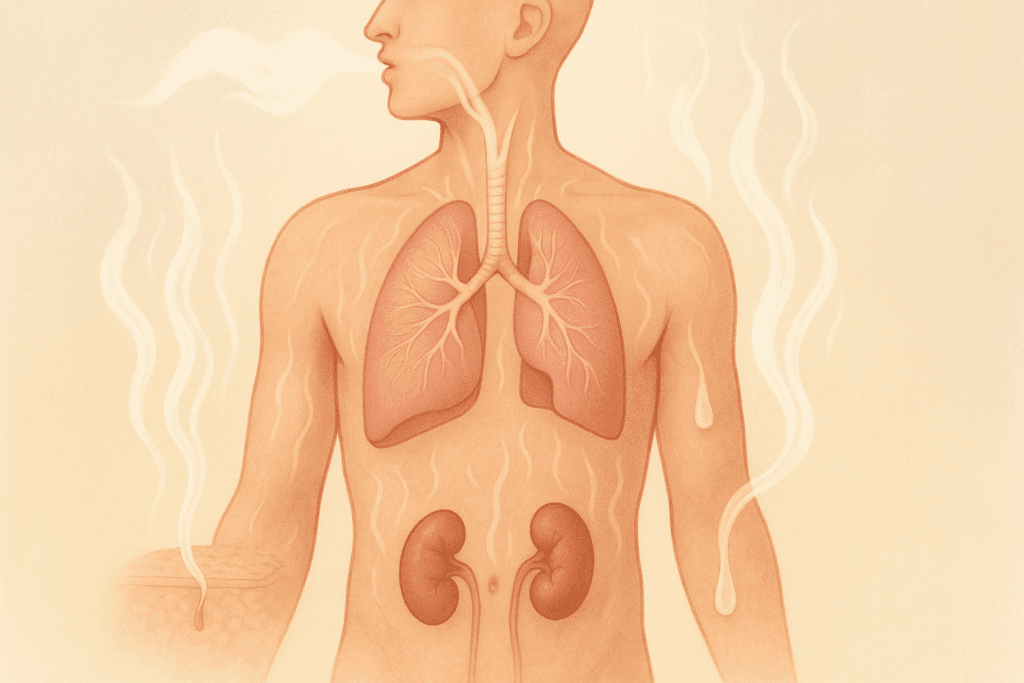
How Does Your Body Get Rid of Fat? A Closer Look at the Elimination Pathways
To fully appreciate how your body gets rid of fat, it’s essential to differentiate between fat metabolism and fat excretion. While the biochemical processes of lipolysis and beta-oxidation explain how fat is mobilized and used, elimination refers to how the by-products of this process leave the body.
As previously discussed, the majority of fat exits the body as carbon dioxide through the lungs. This means that every exhale during rest or exercise contributes, albeit in tiny amounts, to fat loss. The rest of the by-products are excreted in the form of water through sweat, urine, and even tears. This understanding refutes the commonly held myth that fat is simply “burned” or “converted into muscle.” Fat and muscle are distinct tissues with entirely different cellular functions and cannot be interchanged.
Beyond respiratory and fluid loss, some minimal fat content is also lost through fecal matter, primarily from dietary fat that was not absorbed during digestion. However, this accounts for a very small fraction of overall fat loss. Therefore, when answering the question, “how does your body get rid of fat?” we must highlight the central role of respiration and the minor contributions of fluid-based excretion. Understanding this helps demystify the science of weight loss and counters misleading claims about miracle supplements or sweat-inducing devices that purport to “melt away” fat without effort.
Where Do the Fat Go When You Lose Weight? The Role of Metabolic Tissues
Another way to explore this topic is by examining the question, “Where do the fat go when you lose weight?” beyond just the chemical by-products. When fat is mobilized, it must be processed through various metabolic tissues before it can be fully eliminated. The liver plays a central role in converting glycerol into glucose through gluconeogenesis. Simultaneously, skeletal muscle cells utilize free fatty acids for energy during exercise. Mitochondria in these tissues act as the cellular engines where oxidation takes place.
Adipose tissue itself undergoes notable remodeling during weight loss. As fat cells release their stored triglycerides, they shrink in size but do not disappear entirely. This is why previously obese individuals may have an easier time regaining weight—the number of fat cells remains constant even after significant weight loss, and those cells are primed to refill if energy intake exceeds expenditure.
The lymphatic system also assists by transporting fatty acids through the bloodstream in the form of lipoproteins. Meanwhile, the kidneys and bladder contribute to the excretion of water and metabolic waste, completing the cycle of fat removal. Therefore, the question “where do the fat go when you lose weight?” invites a more holistic exploration of how the body’s systems interact to dispose of fat in a gradual, regulated manner. It is not a single organ’s job but a collaborative effort across multiple tissues and systems.
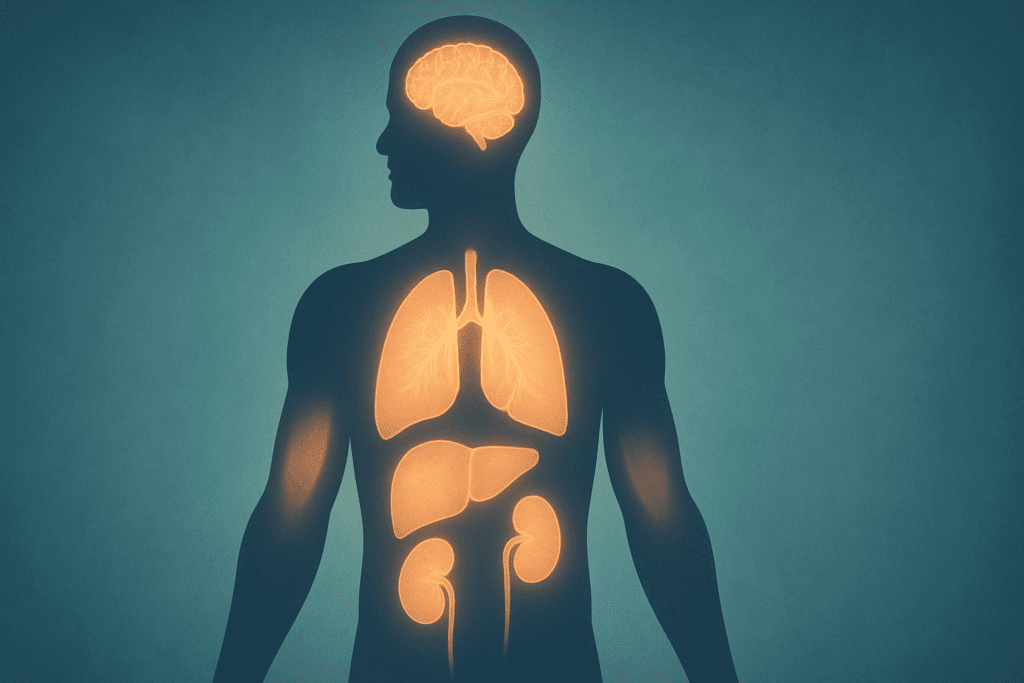
What Body Parts Are Responsible for Weight Loss? A System-Wide Perspective
It’s a common misconception to believe that weight loss is driven by isolated parts of the body—such as the abdomen or thighs. In truth, the answer to “what body parts are responsible for weight loss” is: all of them. Weight loss is a system-wide phenomenon that involves the integration of several organs and tissues working in unison.
The hypothalamus in the brain plays a critical role in regulating appetite, energy expenditure, and satiety signals. It acts as the command center for weight regulation. The pancreas secretes insulin and glucagon, hormones essential to managing blood glucose and fat storage. The liver metabolizes fats, converts glycerol, and manages detoxification processes. The muscles utilize fat for energy, particularly during exercise. Even the lungs and kidneys are instrumental, as they handle the removal of the end-products of fat metabolism.
In this light, the idea that targeting specific body parts for fat reduction—commonly known as “spot reduction”—is scientifically flawed. Weight loss is not localized. Instead, it occurs systemically, influenced by hormonal regulation, genetic predispositions, and lifestyle behaviors such as diet and physical activity. Understanding which body parts are responsible for weight loss shifts the narrative from cosmetic goals to biological truth, underscoring the need for a holistic approach to fat reduction.
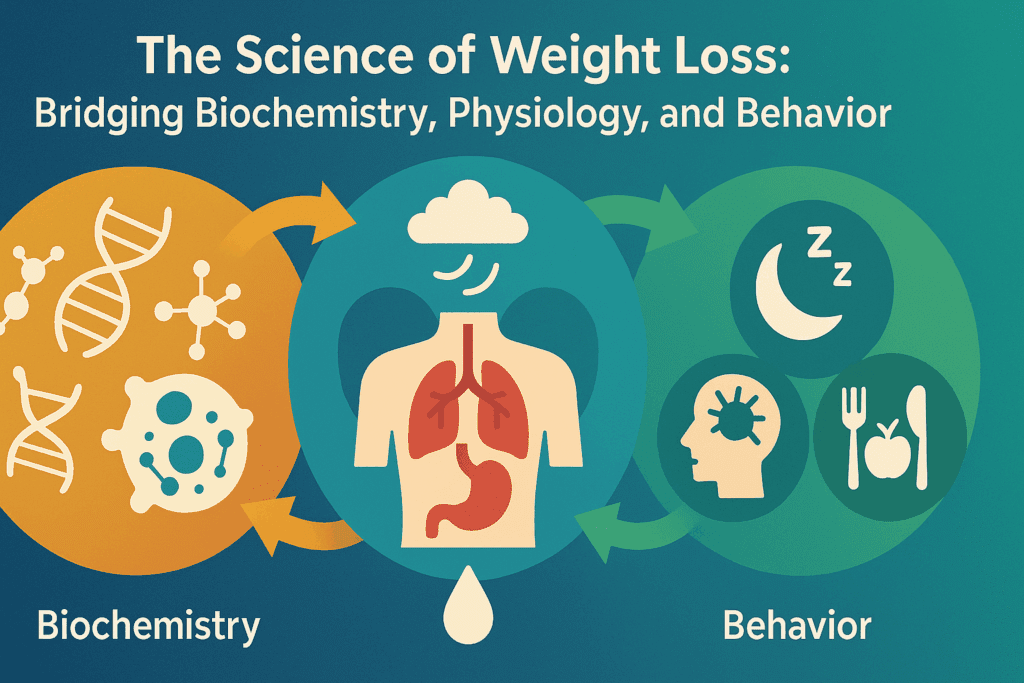
The Science of Weight Loss: Bridging Biochemistry, Physiology, and Behavior
The science of weight loss is not just an academic topic—it is a vital area of study that has real implications for public health, medical interventions, and individual well-being. While public discourse often oversimplifies weight loss into a battle between “calories in vs. calories out,” scientific research paints a more complex picture. Hormonal imbalances, metabolic adaptations, gut microbiota, circadian rhythms, and psychological stress all play meaningful roles in determining how and when fat is stored or lost.
Studies have shown, for example, that individuals with disrupted sleep patterns or high cortisol levels are more prone to abdominal fat retention. Likewise, people with insulin resistance may struggle to lose weight even with calorie deficits due to impaired fat oxidation. These insights deepen our understanding of how weight loss works and highlight the importance of personalized approaches.
Behavioral science also plays a key role. Sustainable weight loss often depends less on short-term dietary restrictions and more on long-term habit formation, psychological resilience, and environmental cues. This is why comprehensive weight loss programs often integrate nutritional education, behavioral counseling, and exercise prescriptions tailored to individual needs. By framing weight loss as a multidisciplinary science, rather than a one-size-fits-all endeavor, we empower individuals with the knowledge and tools necessary for lifelong success.
Frequently Asked Questions (FAQ): The Science of Weight Loss and Fat Metabolism
1. Can stress interfere with how your body gets rid of fat during weight loss?
Yes, chronic stress can significantly disrupt how your body gets rid of fat. Elevated cortisol levels, which are a natural response to stress, promote fat storage—particularly visceral fat around the abdomen. This hormonal interference reduces your body’s efficiency at mobilizing fat stores, making it more difficult to achieve sustainable weight loss. While understanding how weight loss works often centers on diet and exercise, psychological factors like chronic stress are equally important. The science of weight loss increasingly acknowledges that mental health, sleep hygiene, and emotional well-being play direct roles in determining where fat goes when you lose weight and how effectively it’s eliminated.
2. Why do some people lose weight more easily than others, even on the same diet?
Genetics, metabolic rate, and hormonal profiles all contribute to how efficiently someone burns fat. Two people following the same calorie deficit might experience different results because their resting metabolic rates differ due to muscle mass, thyroid function, or even gut microbiota diversity. This individualized variation helps explain not only how weight loss works but also why a personalized approach is more effective than universal diet plans. Additionally, epigenetic factors—how genes express themselves based on environmental influences—can affect how your body gets rid of fat over time. So when you lose weight, where it goes, how fast it goes, and whether fat burns instantly or later all depend heavily on internal variables that vary from person to person.
3. Is it possible to lose fat without significantly lowering your body weight?
Absolutely. The science of weight loss distinguishes between fat loss and weight loss because they are not always synonymous. For example, someone engaging in resistance training may burn fat while simultaneously building lean muscle mass, leading to a stable or even increased body weight despite losing fat. This scenario still reflects successful fat metabolism, especially when evaluating how your body gets rid of fat through improved mitochondrial efficiency and oxygen utilization. In these cases, where the fat goes when you lose weight is less about the scale and more about body composition shifts measurable through tools like DEXA scans or body impedance analysis.
4. Do different types of exercise influence when fat burns—instantly or later?
Yes, different types of physical activity impact whether fat burns instantly or later. High-intensity interval training (HIIT) primarily burns carbohydrates during the activity but triggers an “afterburn” effect—excess post-exercise oxygen consumption (EPOC)—that leads to fat oxidation later. In contrast, low-intensity steady-state cardio (LISS), such as walking or light cycling, mobilizes fat stores during the activity itself. This timing helps explain how weight loss works from a metabolic flexibility standpoint, where your body learns to alternate between fuel sources depending on exertion level and duration. Understanding the science of weight loss through this lens empowers individuals to tailor exercise for maximum fat loss efficiency.
5. What role does sleep play in the fat loss process?
Sleep is a critical, often underestimated factor in how your body gets rid of fat. Poor sleep disrupts hormonal balance, particularly leptin and ghrelin—the hormones responsible for satiety and hunger. Inadequate sleep can reduce insulin sensitivity and increase cravings, indirectly sabotaging fat loss efforts by altering eating behavior and metabolic efficiency. Furthermore, sleep deprivation affects cortisol rhythms, which can shift where the fat goes when you lose weight—potentially leading to more abdominal fat retention. Understanding how weight loss works must therefore include quality sleep as a non-negotiable component of any comprehensive fat loss plan.
6. How do medical conditions like PCOS or hypothyroidism affect where fat goes when you lose weight?
Conditions like polycystic ovary syndrome (PCOS) and hypothyroidism complicate how weight loss works by altering hormone levels and slowing metabolism. For instance, PCOS often leads to insulin resistance, making it harder for the body to access fat stores. Hypothyroidism decreases basal metabolic rate, reducing the body’s overall energy expenditure. These conditions not only influence how your body gets rid of fat but also affect where fat is lost from—often making stubborn fat areas like the midsection more persistent. In such cases, addressing underlying hormonal dysfunction is essential before traditional diet or exercise strategies can be fully effective.
7. Can environmental toxins or pollutants interfere with the fat loss process?
Yes, emerging research in the science of weight loss has identified “obesogens”—chemical compounds that disrupt endocrine function and promote fat accumulation. These can be found in certain plastics, pesticides, and industrial chemicals and may alter how weight loss works at the cellular level. Obesogens can affect adipogenesis (the creation of new fat cells), insulin sensitivity, and thyroid hormone function. They also make it more difficult for your body to access fat stores, influencing where do the fat go when you lose weight or why it doesn’t seem to go anywhere at all. Reducing exposure to these chemicals by avoiding processed foods and plastic containers can support fat metabolism.
8. Why does fat loss often slow down after an initial period of success?
This phenomenon, often referred to as the “weight loss plateau,” is tied to metabolic adaptation. As body mass decreases, your basal metabolic rate also drops because there’s less tissue to maintain. Additionally, hormonal adaptations may reduce satiety and increase hunger, leading to increased calorie intake despite perceived dietary compliance. These adaptive responses affect how weight loss works over the long term and can change where fat goes when you lose weight—shifting it more slowly and inconsistently. To overcome this, experts suggest incorporating refeeds, resistance training, or adjusting caloric intake to match the new metabolic baseline.
9. Are there any future innovations in science that may change how fat is lost?
Yes, the future of fat loss may be transformed by advances in targeted drug therapies, gene editing, and microbiome manipulation. For example, research into brown adipose tissue (BAT) activation aims to harness the body’s thermogenic fat-burning potential by stimulating BAT with cold exposure or specific compounds. Scientists are also exploring CRISPR-based gene therapy to regulate fat storage genes and enhance metabolic flexibility. These breakthroughs could redefine how weight loss works at a molecular level and reshape how your body gets rid of fat—offering more precise and individualized interventions. As the science of weight loss evolves, so will the tools we have to manage it effectively.
10. How can social and cultural factors influence what body parts are responsible for weight loss efforts?
Interestingly, cultural beliefs often shape targeted weight loss goals—such as a focus on flat stomachs or toned arms—despite the biological fact that fat loss cannot be spot-reduced. These societal ideals can lead individuals to misunderstand what body parts are responsible for weight loss, placing disproportionate emphasis on localized training rather than full-body metabolic health. Social support systems, access to health education, and cultural norms around food and activity all play roles in shaping how weight loss works within a community. In this context, where fat goes when you lose weight is often influenced as much by behavioral cues and psychosocial environments as by biology. Recognizing these cultural dynamics is essential for creating inclusive, effective fat loss strategies.
Conclusion: Why Understanding Where Fat Goes When You Lose Weight Matters More Than Ever
In a culture saturated with weight loss fads, pseudoscience, and unrealistic expectations, understanding how your body gets rid of fat provides a much-needed anchor of truth. The question “how does weight loss work” leads us not to simple answers but to a profound exploration of how biology, chemistry, and behavior intersect. When you lose weight, where it goes is not a mystery—it is a process grounded in biochemistry, in which fat is converted into carbon dioxide and water and is eliminated through respiration and bodily fluids.
Knowing where fat goes when you lose weight changes the conversation from one of gimmicks to one of empowerment. It reveals that effective fat loss involves the coordinated efforts of metabolic tissues across the body and is driven by informed, consistent lifestyle changes rather than quick fixes. Whether you’re breathing more heavily during exercise, hydrating to flush out metabolic by-products, or managing your hormonal health through sleep and stress control, you are participating in the complex, awe-inspiring process of fat loss.
In the end, the science of weight loss is not just about looking better—it’s about understanding your body on a deeper level, supporting its functions, and creating an environment where fat loss happens naturally and sustainably. When you understand where fat goes when you lose weight, you gain more than knowledge—you gain the insight and confidence needed to make healthier choices for the long haul.
Further Reading:
How Your Body Fights Weight Loss
Where Does Fat Go When You Lose Weight?
What Happens to Fat When You Lose Weight?


